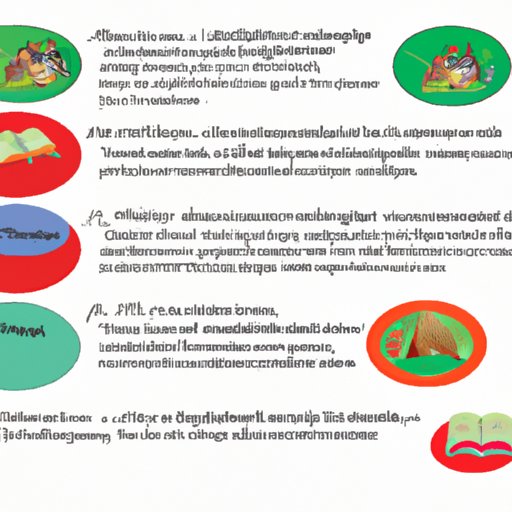Introduction
Narrative writing is a type of writing that tells a story. It can be fiction or nonfiction, but it typically involves a plot, characters, and a setting. This type of writing is often used in novels, short stories, movies, and even plays. In this article, we will look at the basics of narrative writing, different types of narrative writing, key elements of effective narrative writing, and some examples of successful pieces.

Outlining the Basic Structure of Narrative Writing
When creating a narrative piece, it is important to have a basic structure in place. This structure should include an introduction, rising action, climax, and resolution. The introduction will introduce the main characters and the setting for the story. The rising action will be where the conflict of the story is presented and built up. The climax is the most intense part of the story, when the conflict is resolved or reaches its peak. Finally, the resolution is when the story comes to an end and all conflicts are resolved.

Examples of Different Types of Narrative Writing
There are many different types of narrative writing, each with its own unique style and structure. Short stories are typically shorter pieces of writing that focus on a single event or character. Novels are much longer pieces of writing, often spanning multiple chapters and containing multiple storylines. Poems can also be considered a form of narrative writing, as they often tell a story or relate an experience.
Key Elements of Effective Narrative Writing
In order for a narrative piece to be effective, there are certain key elements that must be included. Character development is essential in order for the reader to connect with the characters and understand their motivations and actions. Setting is also important, as it helps to create a sense of place and atmosphere for the story. Plot is the main thread of the story, and dialogue between characters helps to move the plot along. Pacing refers to the speed at which the story is told, and point of view helps determine how the story is told.
Developing Characters and Settings in Narrative Writing
In order to create believable characters and settings, it is important to establish character backgrounds and create vivid settings. Establishing character backgrounds includes giving characters a history, personality traits, and motivations. Creating believable settings involves using descriptive language and imagery to bring the setting to life.
Using Vivid Language and Imagery in Narrative Writing
Using vivid language and imagery can help bring a narrative piece to life and make it more engaging for the reader. Descriptive verbs can help to give an action-packed feel to a scene. Metaphors and similes can be used to compare two things and add depth to a description. Figurative language can be used to evoke emotion and create a mood.

Successful Narrative Writing Pieces as Examples
To get an idea of what makes a good narrative writing piece, it can be helpful to look at some successful examples. “The Lottery” by Shirley Jackson is a classic example of a short story, with a tense and suspenseful plot. “The Catcher in the Rye” by J. D. Salinger is a classic novel that follows the journey of a troubled teenager. “To Build a Fire” by Jack London is a gripping short story that takes place in the Yukon Territory.
Conclusion
In conclusion, narrative writing is a type of writing that tells a story. It has a basic structure that includes an introduction, rising action, climax, and resolution. There are many different types of narrative writing, such as short stories, novels, and poems. Effective narrative writing includes character development, setting, plot, dialogue, pacing, and point of view. Successful narrative writing pieces can provide good examples of how to craft a compelling story.
(Note: Is this article not meeting your expectations? Do you have knowledge or insights to share? Unlock new opportunities and expand your reach by joining our authors team. Click Registration to join us and share your expertise with our readers.)
